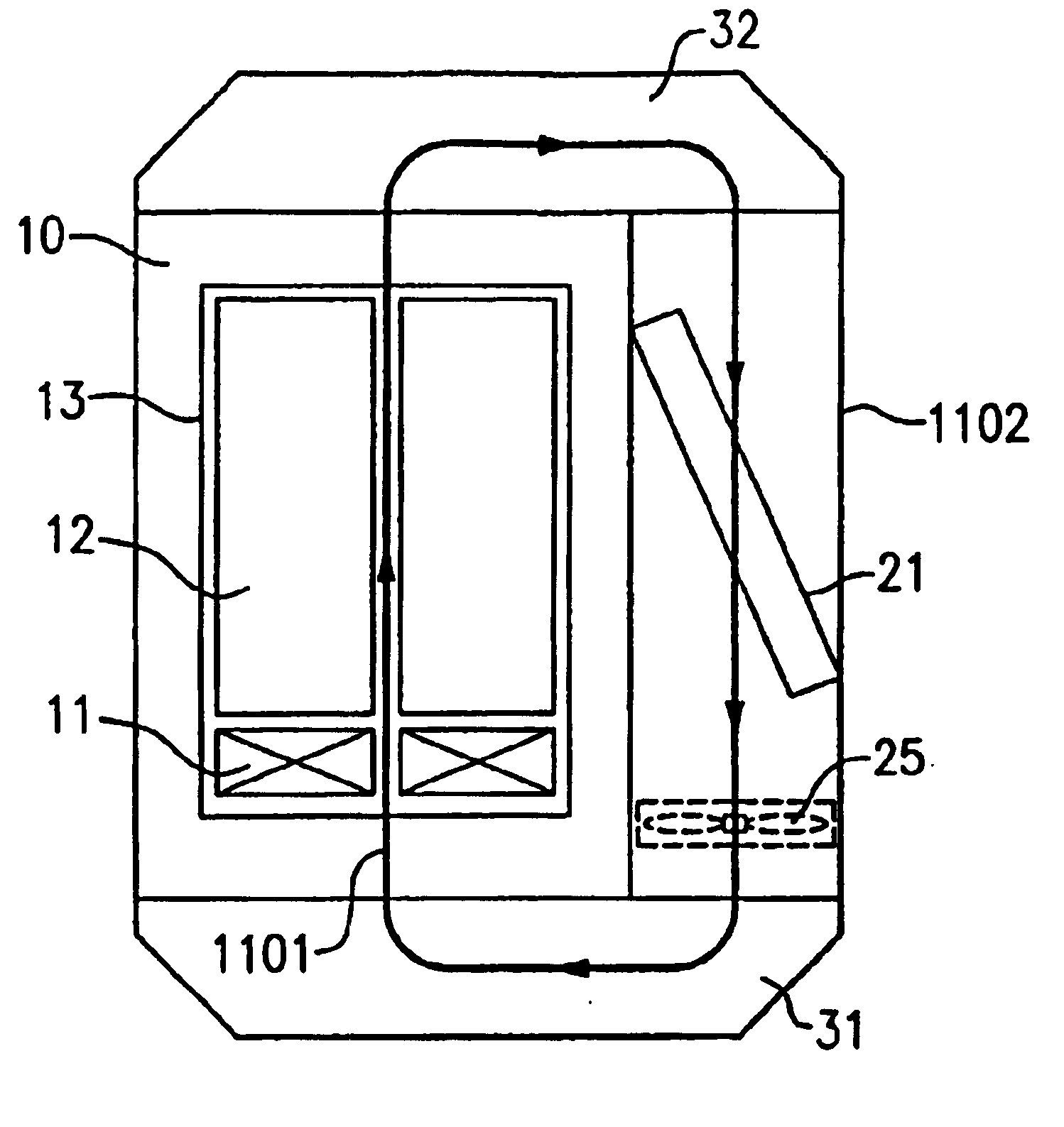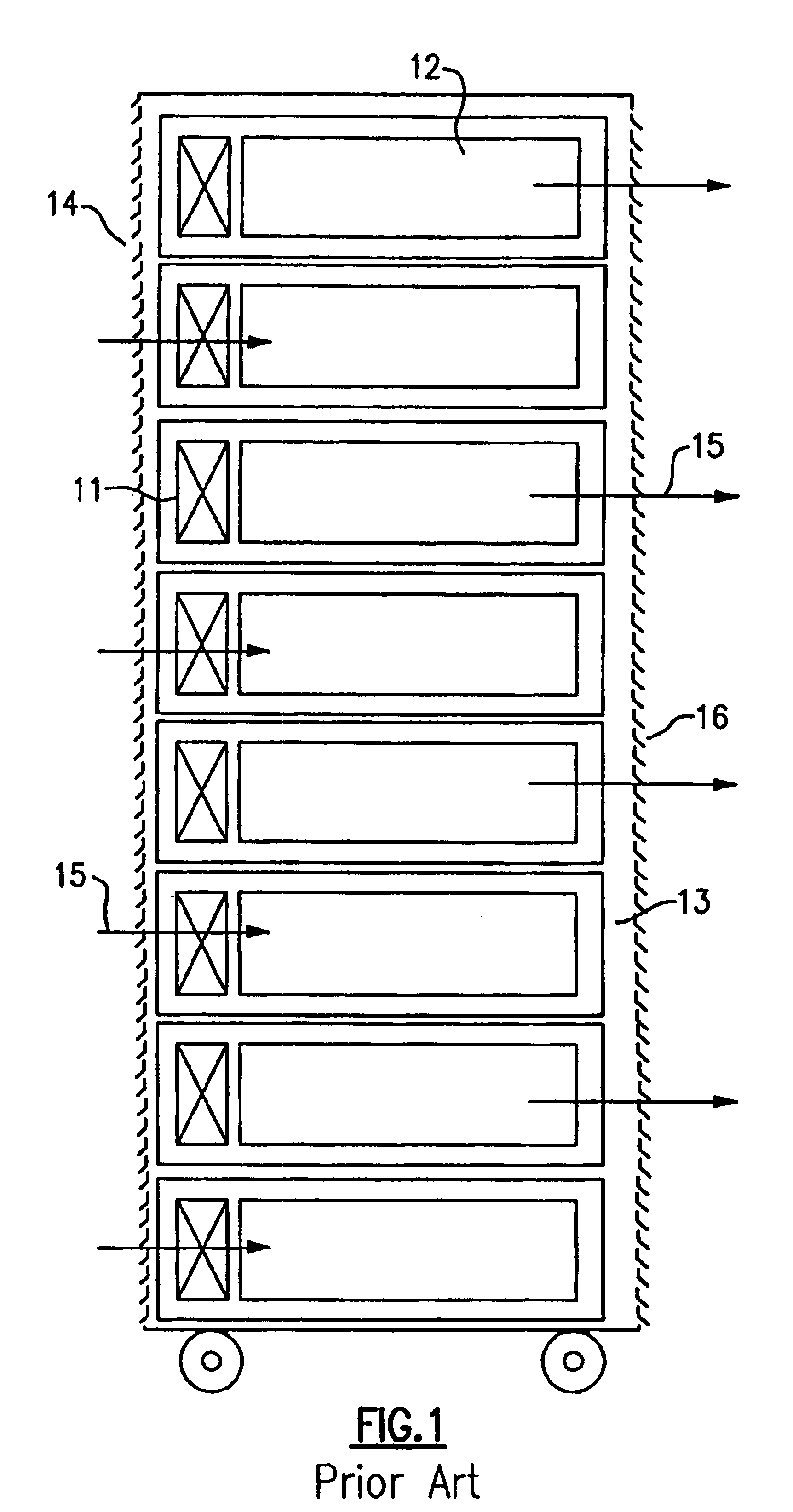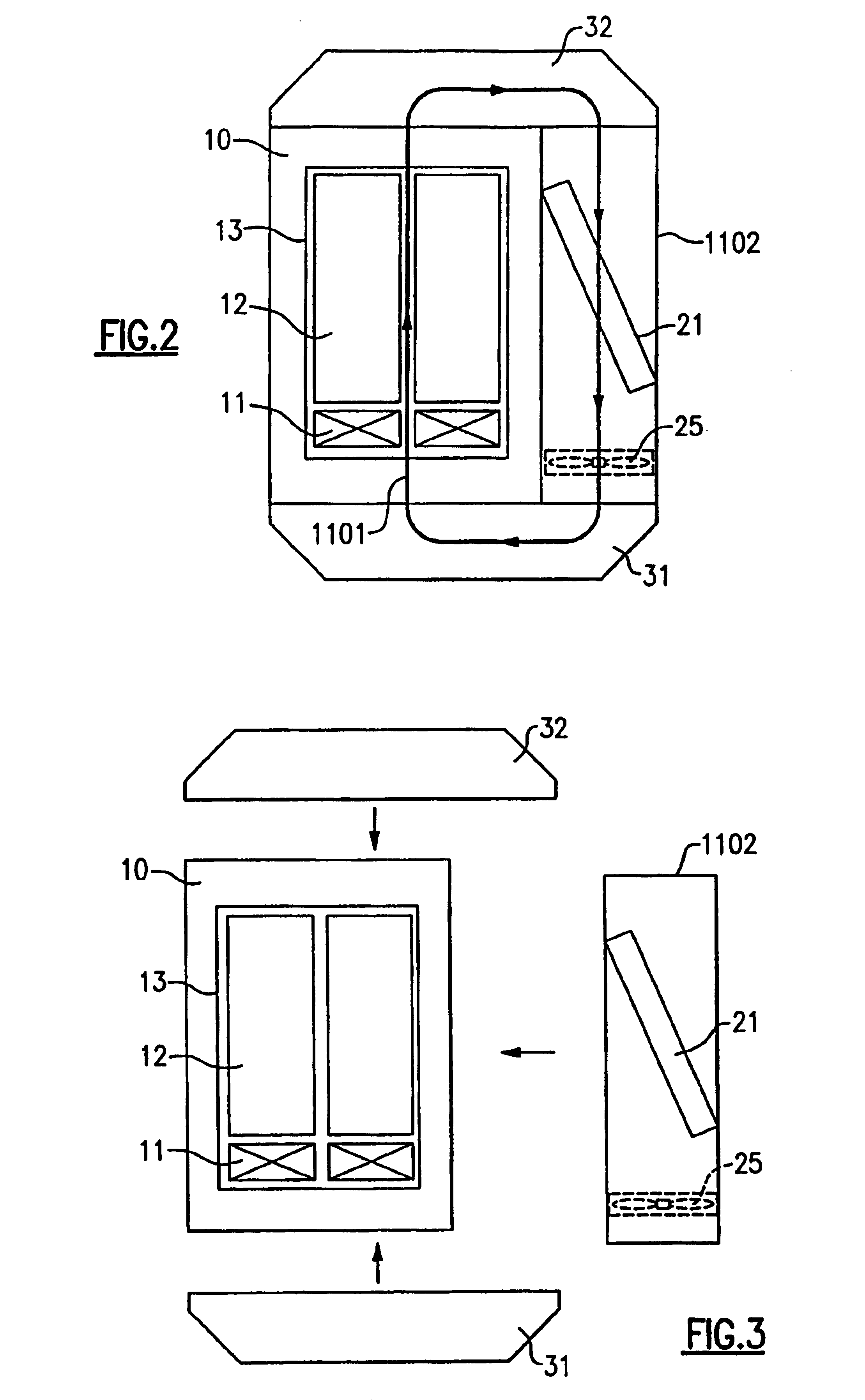Method for combined air and liquid cooling of stacked electronics components
a technology for electronics components and liquid cooling, which is applied in the direction of cooling/ventilation/heating modifications, electrical apparatus casings/cabinets/drawers, instruments, etc., can solve the problems of cooling challenge, unmanageable frame level approach, and the inability of room air conditioning to effectively handle load, so as to reduce both susceptibility to electromagnetic interference and improve characteristics
- Summary
- Abstract
- Description
- Claims
- Application Information
AI Technical Summary
Benefits of technology
Problems solved by technology
Method used
Image
Examples
first embodiment
[0035]the present invention uses the principle of closed air circulation heat removal and introduces an air flow configuration coupled with the placement of the heat exchanger on the side of the electronics frame; it may be preferred in that it offers the following advantages:[0036]The side-mounted heat exchanger is not readily susceptible to accidental damage due to water leakage when service is performed.[0037]The height of the frame is not extended. This is important in a room with sprinkler heads less than nine feet from the floor as there is a safety specification requiring a minimum of 18 inches from the top of the frame to the sprinkler head.[0038]Side chilled air sub-frame is shipped separately and on its own casters greatly simplifying assembly in the field.[0039]Condensation that may be produced by the air chilling heat exchanger is well away from the electronics.[0040]The positioning of the heat exchanger allows for large dimensions with an associatedly large heat removal...
second embodiment
[0044]In accordance with the present invention, a cross-sectional side view of the cabinet and stack of electronic drawers is shown in FIGS. 5a and 5b. As shown in FIG. 5a, air-to-liquid heat exchangers 21 to remove heat from the closed loop air cooling stream are provided across the front (entrance) and / or back (exit) of the stack of electronics drawers. A closed air flow loop is created by the supply plenum 22, electronics drawers 13, return plenum 23, and the connecting duct 24 at the bottom of the cabinet. Although not shown, electrical cables may penetrate the connecting duct to provide signal I / O and electrical power from outside the cabinet. As shown in FIG. 5b, auxiliary fans or blowers 25 may be provided at the inlet and exit of the supply and return air plenums, respectively, to increase the total system air flow and overcome any additional pressure drops incurred due to flow through the plenums. It will be noted that a converging cross-section profile is utilized in the s...
PUM
 Login to View More
Login to View More Abstract
Description
Claims
Application Information
 Login to View More
Login to View More - R&D
- Intellectual Property
- Life Sciences
- Materials
- Tech Scout
- Unparalleled Data Quality
- Higher Quality Content
- 60% Fewer Hallucinations
Browse by: Latest US Patents, China's latest patents, Technical Efficacy Thesaurus, Application Domain, Technology Topic, Popular Technical Reports.
© 2025 PatSnap. All rights reserved.Legal|Privacy policy|Modern Slavery Act Transparency Statement|Sitemap|About US| Contact US: help@patsnap.com



